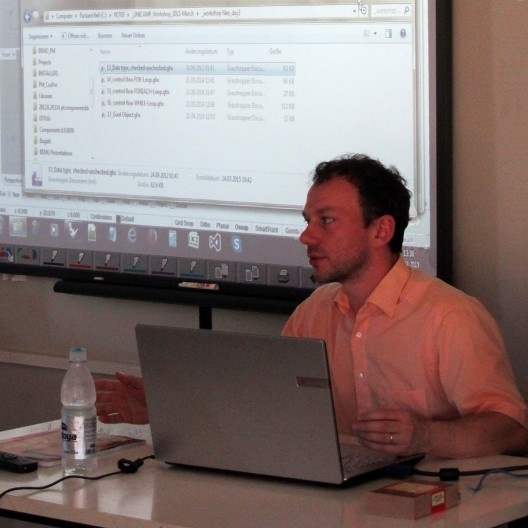
Peter Mehrtens during hisworkshop at Unicamp
Foto/Photo Gabriela Celani
There are three main ways to bridge the gap between architects and the new digital fabrication technologies (1): with in-house specialist groups that work at the architectural office, with design teams that work for the digital fabrication industries, or with independent consultants, who are more flexible but still rare in the market. German architect Peter Mehrtens represents the second and the third options at the same time, working as head of the computational design team at specialist facade fabricator Bemo Systems, in Germany, and as a partner of a consulting firm called Design to Fabrication.
At Bemo, Mehrtens is presently working on the building envelopes for the following projects: "Wei Wu Ying Center For The Arts”, Kaohsiung, Taiwan (architectural design by Mecanoo), “Zagreb International Airport”, Croatia (architectural design by Neidhardt architects / Institut IGH), “Baku Convention Center”, Azerbaijan (architectural design by Coop Himmelblau), “Salzburg Schallmoos Main Station”, Austria (architectural design by Kadawittfeldarchitektur) and “Mriya Sanatorium”, Jalta, Crimea (architectural design by Foster and Partners).
In this interview given to LAPAC researchers, Mehrtens talked about digital fabrication, the differences in the approach and in the use of technology between Bemo Germany and Bemo do Brasil, and also about his personal view regarding education in the field of generative design and digital fabrication to architects.
Peter’s lecture at the University of Campinas (Unicamp), titled “Application of Digital forming Processes in Contemporary Architecture”, attracted 100 attendants.
note
1
CELANI, Gabriela. LENZ, Daniel. Novas tecnologias na construção de edifícios: estabelecendo a ponte entre o processo criativo e a produção por controle numérico. Artigo aceito para publicação no Cadernos PROARQ em abril de 2015.



